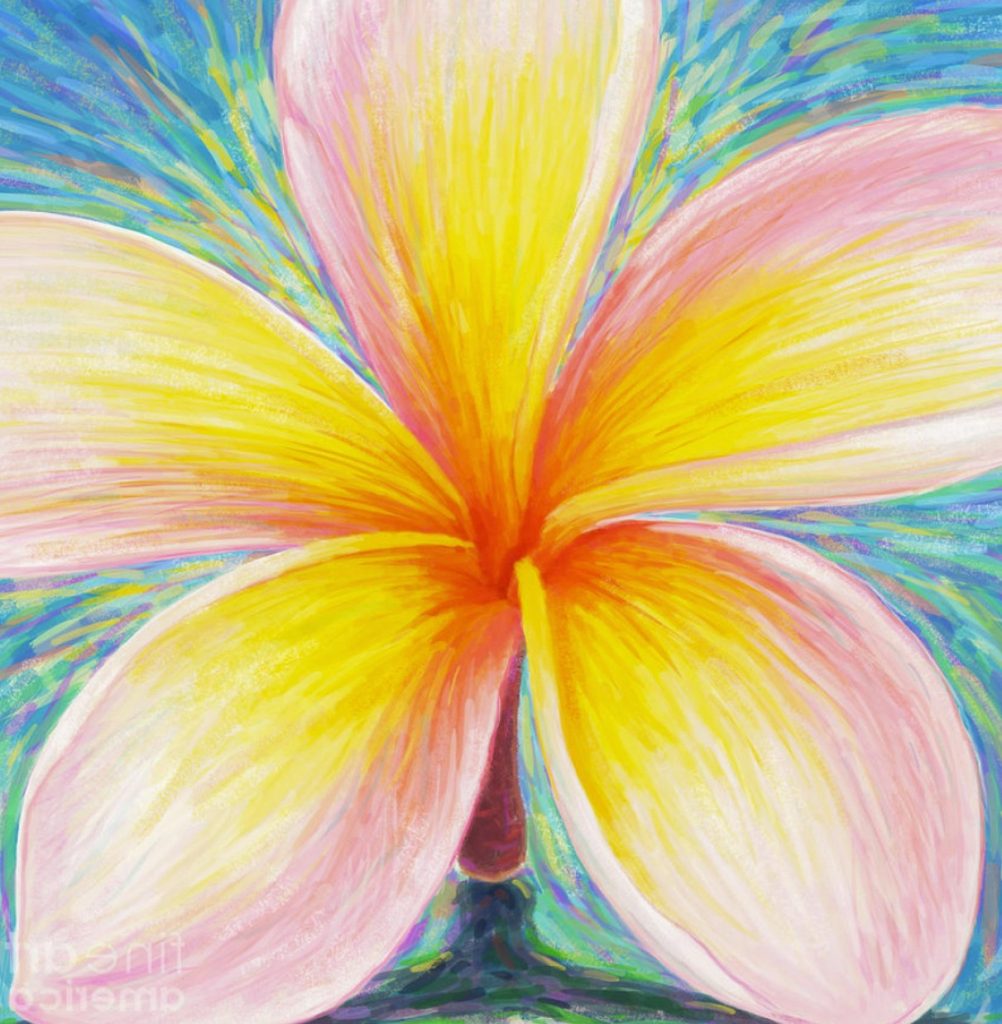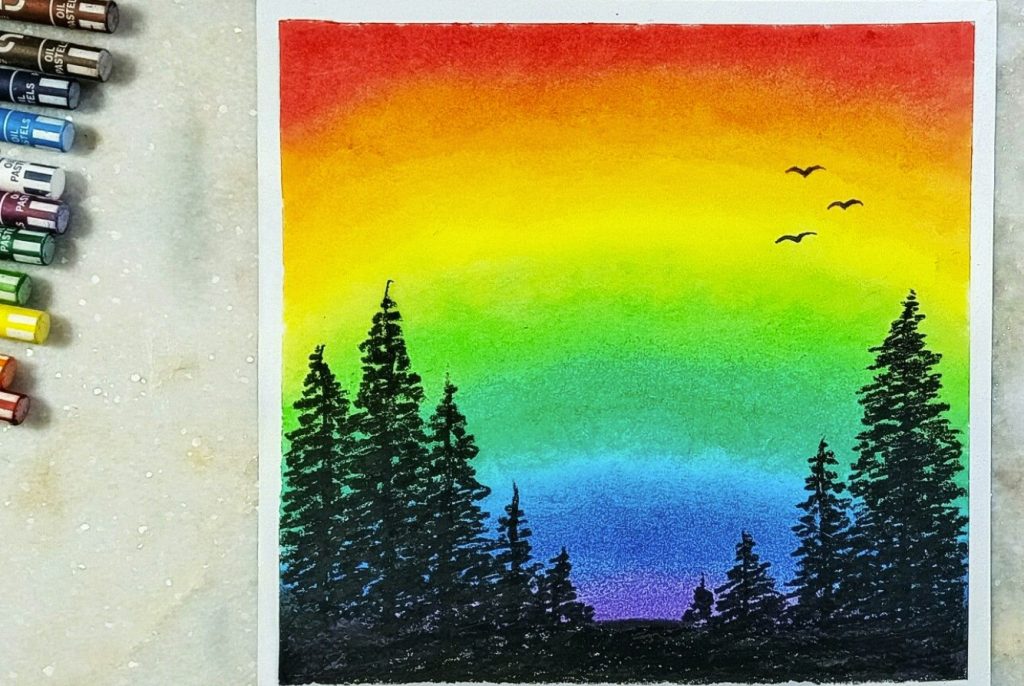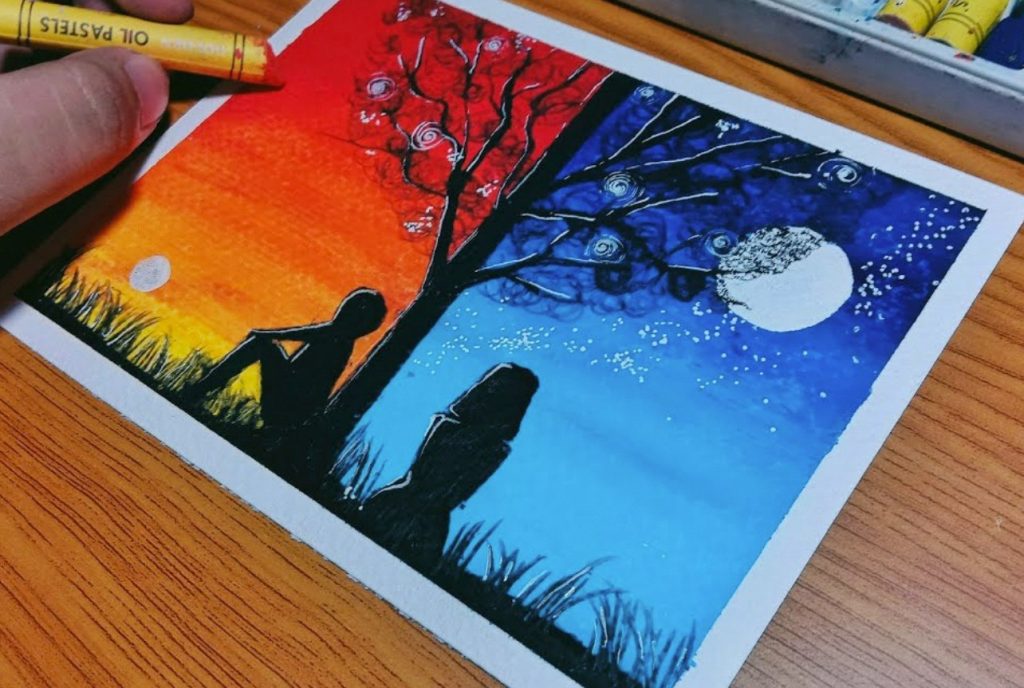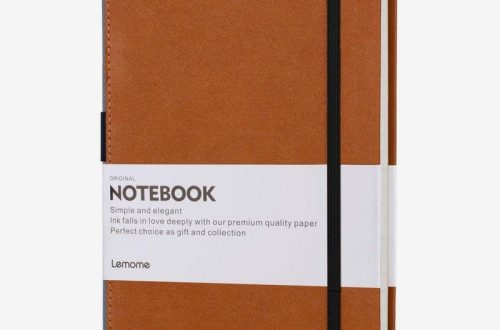Oil pastels transcend the realm of mere representation. With their rich textures and vibrant colors, they become a language for capturing the essence and emotions of a subject, not just a physical likeness. This article delves into the world of oil pastel art, exploring its unique potential to create visually evocative pieces that resonate with feeling.

Part 1: Beyond the Surface: Color as an Emotional Tool
1. The Power of the Palette:
Oil pastels offer a unique vocabulary for expressing emotions. Unlike the smooth blendability of oil paints, oil pastels create a textured surface, pulsating with the energy of each stroke. The choice of colors becomes a deliberate act – warm tones like reds and oranges evoke feelings of joy and excitement, while cool blues and greens suggest serenity or melancholy.
2. The Eyes: Windows to the Soul:
In oil pastel portraits, special emphasis is often placed on the eyes – often referred to as the windows to the soul. When depicting the eyes in a portrait, it is essential to pay close attention and utilize expressive brushstrokes and a variation of colors to convey the emotions and depth seen reflected within them. Through deliberate and careful use of oil pastels, a touch of red strategically placed in the whites of the eyes can suggest a deep well of anger or intensity within the subject, adding a compelling and emotive element to the portrayal. Conversely, incorporating a soft, blended blue within the eyes can evoke a serene sense of tranquility, infusing the artwork with a peaceful and introspective quality. By skillfully manipulating colors and brushstrokes, artists can effectively capture and convey the nuanced emotions and inner thoughts of their subjects, creating striking and emotionally resonant oil pastel portraits that engage and captivate the viewer.

Part 2: Techniques for Emotional Impact: Moving Beyond Representation
1. Selective Focus and Abstraction:
Traditional portraits depict the entire face in detail. In expressive oil pastel art, consider using selective focus. Emphasize certain features like the eyes or mouth with bold strokes and vibrant colors, while leaving other areas more muted or even blurred. This technique draws the viewer’s attention to the emotions you want to convey.
2. Symbolism and Storytelling Through the Background:
The background in an expressive piece isn’t merely an afterthought. It can be a powerful tool for storytelling and emotional reinforcement. A stormy sky can reflect inner turmoil, while a field of wildflowers can represent joy and freedom. Consider incorporating symbolic elements that resonate with the emotions you want to portray.

Part 3: Visualizing Movement and Energy: Techniques for Dynamism
1. The Dance of Lines and Strokes:
Utilizing straight lines and precise strokes in art can convey a sense of stoicism or formality, emphasizing control and structure. However, when creating expressive oil pastel artwork, infusing a piece with movement and dynamism can often yield compelling results. One way to achieve this is by experimenting with loose, gestural strokes that capture the energy and essence of the subject. By employing dynamic and animated strokes, artists can imbue their artwork with a sense of vitality and liveliness, enhancing the emotional impact of the piece. When executing these strokes, paying attention to their direction is crucial. Upward strokes, for instance, can symbolize hope and aspiration, infusing the composition with a sense of optimism and upward momentum. Conversely, downward strokes might convey feelings of sadness or despair, adding a poignant and introspective dimension to the artwork. These deliberate choices in stroke direction contribute to the overall emotional resonance and visual impact of the expressive oil pastel art, elevating it into a compelling and resonant portrayal.
2. Fragmentation and Distortion for Expressive Impact:
Traditional portraiture often focuses on achieving perfect symmetry and accurate proportions, emphasizing a realistic representation of the subject. However, expressive art offers a different perspective, allowing for a greater degree of creative freedom and artistic interpretation. One innovative approach involves breaking away from traditional conventions by fragmenting the portrait and emphasizing specific features within the composition. By using bold colors and exaggerated details, artists can create a striking and thought-provoking representation that resonates deeply with viewers. This intentional variation in focus and intensity fosters a more vivid and evocative portrayal, allowing the artist to convey strong emotions such as intensity or anxiety in a powerful and compelling manner. The fragmentation technique in expressive art provides artists with the flexibility to transcend traditional portraiture, enabling them to create emotionally charged and visually arresting portraits that captivate and engage the audience.

Part 4: Finding Your Artistic Voice: Embrace Experimentation and Vulnerability
1. Reference Photos as Inspiration, Not Dictates:
While reference photos can be useful for capturing the basic features of a subject, it’s important not to feel confined or limited by them when exploring expressive oil pastel art. In this artistic approach, capturing the essence of a person transcends a merely literal representation. Instead of adhering strictly to the reference photo, consider it as a starting point. Allow your creativity to soar. Utilize the unique attributes of oil pastels to infuse the artwork with emotions and feelings. Use color, texture, and mark-making to convey the individual’s essence. By doing so, artists can move beyond a strict replication of physical attributes. They can delve into the realm of emotional expression and interpretation. This allows for creating a piece that speaks to deeper, more nuanced aspects of the subject’s personality and presence. The result is a truly evocative and meaningful artistic portrayal.
2. Imperfections as Expressions of Authenticity:
The beauty of oil pastels lies in their inherent textural qualities. Embrace the marks and imperfections created during the artistic process. These imperfections can add depth, character, and a sense of rawness that perfectly complements the expressive nature of the art. In a world of digital perfection, oil pastels allow you to create art that is uniquely you, a visual representation of your emotions and artistic journey.

In conclusion, oil pastels empower you to create art that transcends mere likeness. By delving into the language of color, texture, and expressive techniques, you can capture the emotions that flicker beneath the surface. Embrace experimentation. Find your artistic voice. Allow oil pastels to become your tool for creating visually evocative pieces that resonate with the very essence of your subject and your own artistic spirit.


